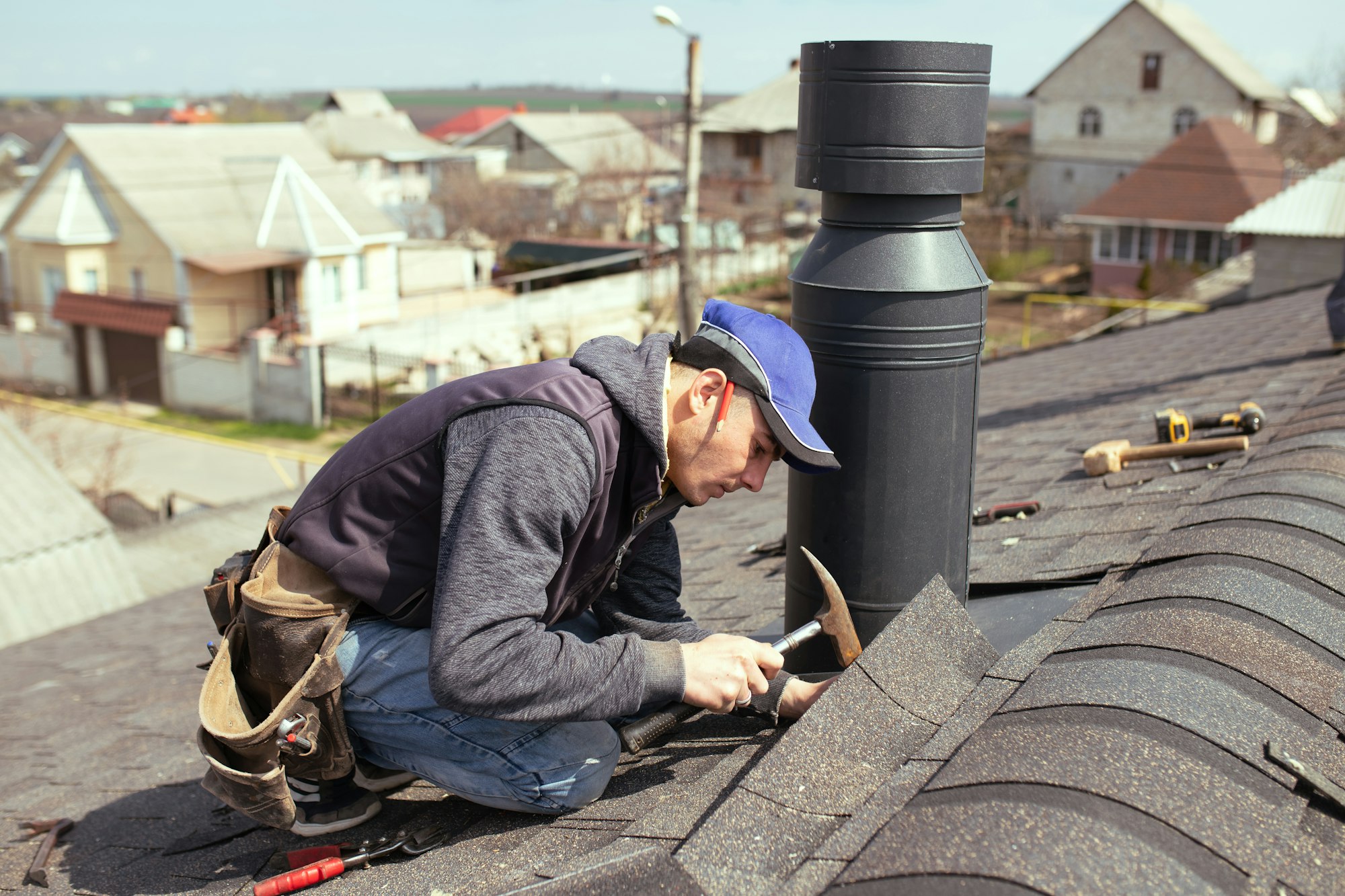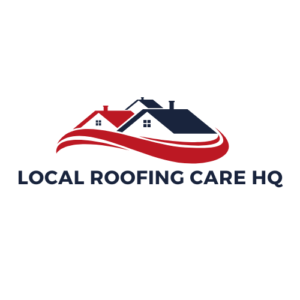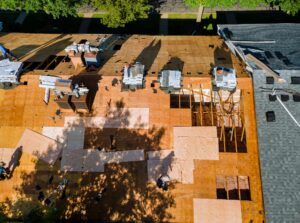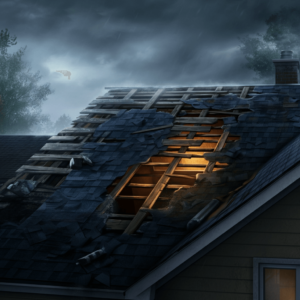Your roof is your home’s first line of defense against the elements, making its maintenance crucial for overall home improvement. against the elements, making its maintenance crucial.
But how do you know when it’s time to repair or replace it? Understanding the costs involved can also help in making a cost-effective decision. it?
This guide highlights the signs that indicate your roof may need attention, the pros and cons of tackling repairs yourself, and when it’s best to call in a professional help when assessing your roof options..
With tips on finding a trustworthy roofing contractor or local contractors who understand local regulations., you’ll be well-equipped to make informed decisions about your roof’s health.
What Are the Signs That Your Roof Needs Repair?
.jpg_00.jpeg)
Recognizing the signs that your roof needs repair is crucial for maintaining your home’s structural integrity and safety precautions are necessary to prevent accidents during DIY project planning is essential for successful home maintenance.s. are vital for home longevity. and safety. Common indicators include visible leaks and other signs like shingle deterioration., water damage that could lead to the need for emergency repairs., or sagging areas, which can lead to significant roofing issues if ignored, including potential leaks. if ignored.
Additionally, missing or damaged shingles on flat roofs can lead to serious complications. and excessive granules in gutters indicate that your shingles are deteriorating due to age or weather conditions can affect the longevity of roofing materials should be selected carefully to ensure effective weatherproofing… in gutter systems are also warning signs that your roof may require immediate attention and potentially professional assistance to avoid DIY risks..
This guide will help homeowners assess these signs effectively and understand the necessary steps for timely roof maintenance and repairs, a key part of your home’s maintenance schedule., which are essential for long-term protection against environmental impact and energy efficiency. and energy efficiency.
1. Leaks and Water Damage
Leaks and water damage are among the most evident signs that your roof is in need of repair, and they can lead to severe issues due to improper repair techniques must adhere to local regulations and code compliance. employed can significantly influence project success. can lead to additional costs. if not addressed promptly.
Homeowners should regularly check for signs such as water stains on ceilings or walls, which often indicate hidden leaks. on ceilings or walls, which often indicate hidden leaks. Common sources of water damage include deteriorated shingles that compromise roof aesthetics can lead to structural integrity issues., clogged gutters are a major cause of leaks and prolonged water damage., and improper flashing around vents.
By conducting routine roof inspections are essential for maintaining your roof lifespan., homeowners can catch these problems early, ensuring that minor issues do not escalate into costly repairs. Implementing DIY tips like clearing debris from gutters is part of good maintenance tips for homeowners. and checking for cracked or missing shingles can lead to further damage assessment. can prevent damage.
Prioritizing preventive maintenance not only extends the lifespan of the roof but also protects the home’s interior from water-related issues.
2. Missing or Damaged Shingles
Missing or damaged shingles can significantly compromise your roof’s effectiveness in repairs can lead to increased home equity can be improved with successful home improvements. and resale value is often enhanced by well-maintained roofs.. in protecting your home against weather conditions.
Identifying these issues involves closely inspecting the roof for any visible gaps or areas where the shingles might be lifted or missing entirely. This is crucial because any compromised section can lead to leaks, mold growth, and even structural damage over time.
Homeowners should definitely look for curling, cracking, or discoloration as additional signs of wear. If a shingle seems out of place, it’s often best to address it promptly.
For those with some DIY skills are crucial for homeowners looking to save on costs., replacing a shingle is manageable; simply gather necessary materials like roofing adhesive and a replacement shingle, and follow proper techniques to ensure a watertight seal.
Regular maintenance, including cleaning gutters and checking for debris, can also prolong your roof’s lifespan and functionality.
3. Sagging or Uneven Roof
A sagging or uneven roof is a serious issue, often indicating underlying structural problems that require immediate attention for both safety and long-term stability.
To accurately assess the roof’s pitch and identify any signs of sagging or unevenness, one can begin by observing the roof from various angles, looking for visible dips or irregularities in alignment.
Using a level can help ensure that no sections are out of plane, highlighting imperfections that may not be immediately noticeable. Pay attention to the structural integrity of the supporting elements, such as rafters and trusses, as weakened supports can contribute to roof collapse over time.
Regular roof maintenance checks are essential, which include inspecting for signs of water damage, sagging shingles, or gaps around chimneys that could lead to leaks.
Addressing these issues promptly can prevent costly repairs and enhance the longevity of the entire roofing system.
4. Excessive Granules in Gutters
Finding excessive granules in your gutters can be a clear indication that your shingles are deteriorating and that your roof may be at risk of leaks and other issues.
This deterioration often stems from several factors, including age, weather conditions, and improper installation.
To assess the condition of the roof, a thorough inspection should be conducted, focusing on the shingles’ surface for signs of wear such as curling or cracking. Homeowners should also check for any granule accumulation in the gutters, which can signal significant wear.
Regular preventive maintenance plays a crucial role in extending the roof’s lifespan, as addressing small issues promptly can prevent costly repairs down the road. Ensuring that gutters are clear can help facilitate effective drainage, further safeguarding the roof’s integrity.
Can You Do Your Own Roof Repair?
Many homeowners wonder if they can undertake their own roof repair projects can be manageable with proper preparation steps., and while DIY can be a cost-effective option, it requires careful consideration of skills, tools needed for the job can vary based on the type of roofing materials used., and the scope of the project.
1. Assessing Your Skills and Experience
Before starting any DIY roof repair project, it’s essential to honestly assess your skills and experience to ensure safety and success.
This self-evaluation should involve reflecting on any previous DIY experiences, as past successes or challenges can provide valuable insights into your capabilities.
Consider your comfort with heights; working on a roof can be risky and requires not only physical balance but also mental readiness is vital for anyone considering a DIY project.. Knowledge of different roofing materials is crucial too, as understanding the properties and installation methods of shingles, tiles, or metal can directly influence the repair techniques employed.
By thoughtfully weighing these factors, homeowners can better equip themselves for a successful repair job.
2. Understanding the Scope of the Repair
.jpg_01.jpeg)
Understanding the scope of your roof repair is crucial in determining the necessary materials, tools, and time investment required for the project.
By systematically assessing the extent of damage, homeowners can identify whether they need minor patchwork or a complete overhaul. This evaluation should include checking for leaks, cracks, or missing shingles, and it may also require the expertise of a professional for a thorough inspection.
Once the issues are pinpointed, planning the project becomes essential. This planning involves creating a realistic budget that accounts for all necessary repairs, unexpected contingencies, and labor costs. Setting a timeline is equally important, as it allows one to allocate time effectively, minimizing disruption to daily life and ensuring a smooth repair process should include a thorough material selection..
3. Gathering the Necessary Tools and Materials
Gathering the right tools and materials is a key step in any DIY roof repair project, as having everything on hand can save time and ensure safety.
When embarking on such an endeavor, it’s crucial to compile a comprehensive checklist for DIY roof repair projects should include safety gear and tools. that encompasses not only the necessary roofing materials like shingles, sealants, and flashing but also essential tools such as a ladder, hammer, and roofing nailer.
Safety gear should also be a top priority; hard hats are essential safety gear to minimize hazards., gloves, and non-slip shoes are vital to minimize hazards associated with working at heights.
Having tarps are useful in protecting your lawn and surrounding areas from debris. handy can help manage debris and protect the surrounding area, further streamlining the repair process.
By being well-prepared with this array of items, the individual can approach the task more confidently, ensuring both effectiveness and safety during the roof repair project.
What Are the Risks of DIY Roof Repair?
While DIY roof repair can be appealing, it’s essential to understand the risks involved, including personal safety concerns should be the top priority when considering DIY roof repair. and the potential for improper repair techniques that could lead to further roofing issues.
1. Personal Safety
Personal safety is paramount when it comes to DIY roof repair, and taking the right precautions can help prevent accidents and injuries.
By prioritizing safety measures, individuals can significantly reduce the risks associated with working at height.
Utilizing proper safety gear such as harnesses, hard hats, and non-slip footwear is essential for protecting oneself against potential falls and injuries. One should ensure that ladders are positioned on stable ground and are secured to prevent slipping.
It’s crucial to inspect the roof for hazards like loose shingles or wet areas before climbing. Knowing how to safely ascend and descend, along with being aware of the weather conditions, will give the power to DIY enthusiasts to approach their tasks with confidence and care.
2. Improper Repair Techniques
Using improper repair techniques can lead to costly roofing issues down the line, emphasizing the importance of following guidelines and procedures for effective repairs.
Many homeowners take on DIY roof repairs with the best intentions, only to discover that a lack of expertise can result in a variety of pitfalls. Common errors, such as neglecting to properly assess the roof’s condition or failing to use the right materials, can exacerbate existing problems instead of resolving them.
This misstep can lead to leaks, structural damage, and even mold growth, which might become an extensive and expensive remediation process. Awareness of these potential repercussions underlines the necessity for thorough troubleshooting and seeking professional advice when necessary, ensuring a more reliable and long-lasting roof condition.
3. Voiding Roof Warranty
One significant risk of DIY roof repair is the possibility of voiding your roof’s warranty, which can result in unexpected costs if repairs are needed in the future.
Many manufacturers stipulate that any unauthorized repairs or installations can lead to a complete loss of coverage, making it essential for homeowners to consider the long-term implications of their decisions.
Not only can this affect your access to warranty-covered repairs, but it may also have repercussions for your insurance policy. If there is severe weather or unforeseen roofing issues, improper DIY repairs could complicate or even nullify claims.
Therefore, it is crucial to familiarize oneself with local regulations and consult with a professional when necessary to ensure that your home remains protected from both warranty and insurance pitfalls.
When Should You Hire a Professional Roofing Contractor?
Knowing when to hire a professional roofing contractor is crucial, particularly when faced with extensive damage or complex roof designs that require specialized expertise.
1. Extensive Damage
.jpg_10.jpeg)
If you notice extensive damage to your roof, it’s essential to seek professional help immediately to avoid further issues and ensure safety.
Ignoring these signs can lead to increased repair costs, as small leaks or cracks can worsen over time, potentially resulting in structural weaknesses that compromise the entire building.
Water intrusion can create hazards like mold growth, which poses serious health risks to occupants. It’s crucial to recognize indicators such as curled shingles, discoloration, or excessive granule loss that suggest deeper problems.
Delaying necessary repairs often correlates with escalating costs and safety concerns, making it vital for homeowners to act swiftly and consult experienced contractors who can assess the situation accurately and provide effective solutions.
2. Complex Roof Design
Complex roof designs often require specialized expertise for effective installation and repairs, making it wise to hire a professional roofing contractor.
These intricate roofing systems can include multiple slopes, intricate valleys, and various materials that call for a deep understanding of both construction and design principles.
When attempting repairs on such roofs, even minor mistakes can lead to leaks or structural failures, ultimately compromising the integrity of the entire system. This is why having an experienced roofing professional on hand is invaluable; they possess the skills and knowledge needed to navigate the unique challenges presented by complex installations.
Their familiarity with local building codes and regulations ensures that all work is compliant, providing peace of mind and enhancing the longevity of the roofing system.
3. Lack of Time or Resources
If you find yourself lacking the time or resources to undertake roofing repairs, it may be best to hire a professional contractor to ensure the job is done correctly.
Many homeowners underestimate the complexities involved in such projects, which often require not only specialized skills but also an understanding of materials and safety regulations.
With the time commitment that goes into project planning, from sourcing materials to obtaining permits, these tasks can quickly escalate. A professional has the experience and expertise to navigate potential pitfalls, ensuring that the quality of work is up to standard and completed within a reasonable timeframe.
By investing in a professional service, individuals can save themselves the hassle and uncertainty associated with DIY challenges, ultimately resulting in a more durable and aesthetically pleasing outcome.
How to Find a Reliable Roofing Contractor?
Finding a reliable roofing contractor is essential for ensuring quality repairs and satisfaction, and it begins with asking for referrals and checking credentials.
1. Ask for Referrals
One of the most effective ways to find a reliable roofing contractor is to ask for referrals from friends, family, or community resources.
Personal recommendations can often lead you to skilled professionals who have proven their workmanship in real-life scenarios. By tapping into your personal network, you may uncover firsthand accounts of contractors who excel in handling specific roofing issues such as leaks or storm damage.
Exploring local community resources, such as neighborhood forums or social media groups, can provide reviews that offer insight into contractors’ reputations. Evaluating these shared experiences not only helps you gauge the quality of services but also allows you to feel more confident in your choice, ensuring that you select a contractor who aligns with your needs.
2. Check Credentials and Reviews
Checking credentials and customer reviews is a critical step in ensuring you hire a competent roofing contractor who adheres to local regulations and safety standards.
It’s essential to look for specific qualifications, such as licenses, insurance coverage, and any relevant certifications, which indicate the contractor’s expertise in navigating local building codes.
When reviewing customer feedback, focus not only on the overall ratings but also on the details of the experiences shared. Look for comments about the contractor’s communication, adherence to timelines, and quality of workmanship.
This comprehensive approach provides valuable insights, helping you choose a contractor who not only understands roofing but also prioritizes compliance with regulations vital for your peace of mind.
3. Get Multiple Quotes
Getting multiple quotes from different roofing contractors is a smart way to compare services and pricing, helping you stay within your budget.
By obtaining a range of estimates, homeowners can gain insights into varying roofing costs, which are influenced by materials, labor, and even the complexity of the project.
When evaluating these quotes, it’s essential to consider not only the price but also the quality of materials, workmanship guarantees, and timelines for project completion.
Understanding what is included in the quotes, such as potential hidden fees or cleanup costs, can be crucial in making an informed decision.
Ultimately, this diligent comparison ensures that both the homeowner’s financial constraints and project goals are aligned.
Frequently Asked Questions
.jpg_11.jpeg)
What is DIY Roof Repair?
DIY Roof Repair refers to repairing your roof on your own, without hiring a professional. This can include repairing damaged shingles, sealing leaks, or even replacing the entire roof.
Is DIY Roof Repair the Right Choice for Me?
This depends on a few factors, such as the extent of the damage, your experience with DIY projects, and your comfort working at heights. It’s best to assess your skills and the severity of the issue before deciding if DIY Roof Repair is right for you.
Can I Save Money by Doing My Own Roof Repair?
In some cases, DIY Roof Repair can save you money compared to hiring a professional. However, if the repair is not done correctly, it can end up costing you more in the long run. Make sure to weigh the costs and benefits before making a decision.
What Are the Risks of DIY Roof Repair?
Some of the risks of DIY Roof Repair include potential injury from working at heights, making mistakes that can lead to further damage, and not having the proper tools or materials. It’s important to educate yourself and take necessary safety precautions before attempting any DIY Roof Repair.
What Are Some Common DIY Roof Repair Mistakes to Avoid?
One common mistake in DIY Roof Repair is not properly sealing leaks, which can lead to costly water damage in the future. Another mistake is using the wrong materials or techniques, resulting in a temporary fix that will need to be redone sooner than expected. Research and educate yourself before starting any DIY project.
When Should I Consider Hiring a Professional for Roof Repair?
If you have little to no experience with DIY projects, the damage is extensive, or the repair requires specialized tools or equipment, it may be best to hire a professional for your roof repair. Additionally, if your roof is still under warranty, attempting DIY repairs may void the warranty.




